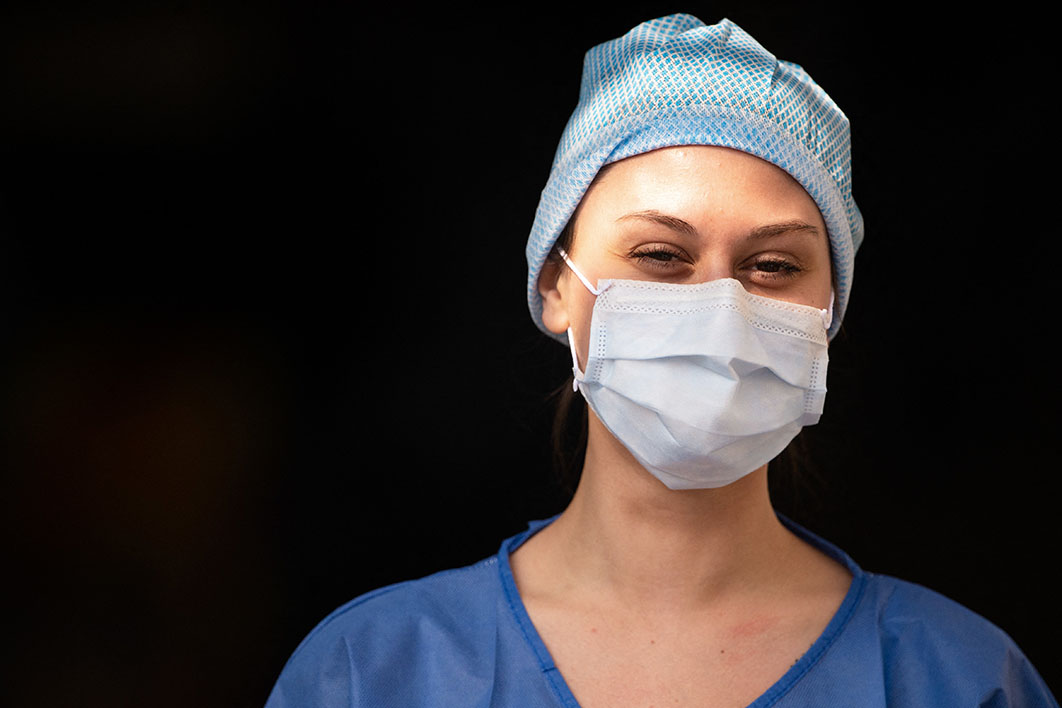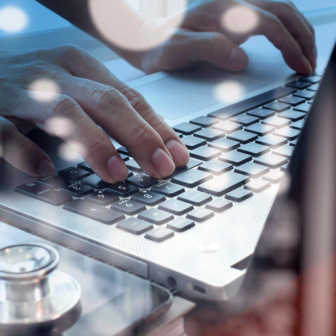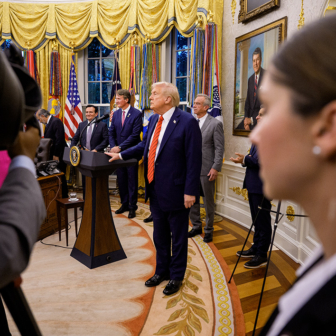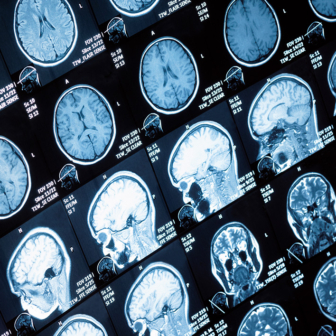United by the hashtag #Masks4All, a growing movement wants us all to wear masks in public to control Covid-19. Not only that, some on its radical fringe — mask truthers, if you like — accuse public health officials of barefaced lying about masks’ protective benefits. They have circulated graphs showing Covid-19 cases across the world, highlighting the lower trajectories of Southeast Asian countries with a crayon circle labelled “masks.”
This week, the US Centers for Disease Control and Prevention joined in, endorsing the use of masks by the general public. A flurry of articles have struggled to filter the evidence for and against. Some commentators are even saying the evidence now shows that SARS-CoV-2 is capable of not just droplet transmission but airborne transmission too. So, what can we make of all this? Here are three key things you need to know before you pull on that mask.
HOW COVID-19 IS TRANSMITTED
The virus that causes Covid-19 is known as SARS-CoV-2. Initially of animal origin, it aroused global health concern when reports of human-to-human transmission emerged in December 2019. After it began spreading in Wuhan, the city was locked down and 1800 teams of five or more epidemiologists descended, tracing all cases and their contacts. That research provided a detailed picture of what happens before control measures are put in place, and it found that the average person who contracted Covid-19 transmitted the virus to 2.2 other people over the duration of their illness. Importantly, they were almost always people with whom they had close and prolonged contact.
Some people have interpreted the recommendation that we keep at least 1.5 metres from each other as meaning the virus is easily passed on via brief and casual contact. The contact tracing carried out in Wuhan gives a better picture of how this condition really is transmitted.
When we say a viral pathogen is capable of airborne transmission, we mean two things at once. One is that people who are sick cough up particles of five microns or less, which are typically generated deep in the lungs and can hang in the air for hours after a cough or sneeze. The other is that inhaling those particles is enough to cause a new infection.
You can catch measles, for example, by walking into a room that somebody with measles coughed in hours earlier — you don’t need to have direct contact with that person. This is why measles spreads like wildfire in unvaccinated populations, as we saw recently in the tragic outbreak in Samoa.
The spread of SARS-CoV-2 beyond its epicentre in Hubei coincided with Chinese New Year, when people from all over China travel for hours at close quarters on planes and trains back to their home towns. If Covid-19 were airborne, that would have been clearly visible in the epidemiology of the outbreak.
Epidemiologists in China were almost always able to identify whom each person had caught Covid-19 from, because the two people had spent time in close physical proximity, where droplets from coughs and sneezes can be transferred from surfaces, via hands, onto faces.
If the condition were airborne, there would have been many cases of transmission — of genetically linked virus — where the people involved were never in the same room at the same time. With upwards of 80,000 cases in China, we have a high degree of confidence that Covid-19, rather than being airborne, is passed on via droplet transmission.
Some mask proponents cite a study that found SARS-CoV-2 particles in “air-conditioning ducts” as evidence of airborne transmission. The ducts in question turned out to be the extractor vent for a negative pressure isolation room occupied by a symptomatic patient at an outbreak centre in Singapore. The same study used sensitive methods to test for virus in the air itself — and all of those tests came back negative.
Mask advocates also cite a recently published study that found genetic material from viruses that cause influenza and head colds in exhaled breath. Other studies have reported droplets from sneezes travelling up to eight metres from the sneeze that produced them.
These studies don’t answer a key question: were there enough droplets after eight metres; did they have enough virus in them; and was the virus infectious enough to infect another person in the absence of close and sustained contact?
The answer depends on the illness and even varies according to the strain of the virus within broader viral families. In this outbreak, we have no evidence to believe that SARS-CoV-2 is capable of airborne transmission.
Rather, Covid-19 is passed on when coughs and sneezes spray droplets of mucus and spittle onto nearby surfaces. When we touch those surfaces, we may transfer them to our face, allowing the virus to establish infection. This is why we recommend handwashing, avoiding facial touching, coughing or sneezing into your elbow, and keeping a physical separation from others.
WHAT (AND WHO) MASKS ARE GOOD FOR
Mask advocates are correct in picking up an apparent contradiction: why are masks protective for healthcare workers but not for the general public?
It comes down to social distancing. Doctors and nurses can’t listen to your chest from 1.5 metres away — they have to get right up in your grill, within the blast radius for coughs and sneezes. Guidelines in Australia recommend a surgical mask for face-to-face treatment of patients with confirmed or suspected Covid-19 illness. There’s an additional subset of treatments, known as aerosol-generating procedures, which call for an N95 respirator. This includes lifesaving interventions like intubation. So it’s vital we preserve clinical wear for clinical care.
Clinicians get no benefit from using higher-grade personal protective equipment, or PPE, than recommended. Anyone who is unfamiliar with this equipment runs the risk of accidental self-contamination when taking it off, as we saw during the Ebola crisis.
Surgical masks are also given to clinic and hospital patients who have respiratory symptoms, or who are confirmed or suspected cases of Covid-19. This is known as source control, with masks protecting others by catching droplets from coughs and sneezes. This is essential when people with symptoms seek out medical care. Other than that, if you have symptoms, or a recent close contact with a known or suspected case, you should not be out in public at all — mask or no mask, you should be at home in self-isolation.
If you’re not in either of those categories — a healthcare worker getting up close and clinical, or a person seeking testing or medical care — is there any benefit in using a mask? The potential benefit depends on how much risk you would be facing without the mask.
The Communicable Diseases Network Australia defines two conditions where the risk of Covid-19 transmission is greatest: close and sustained personal contact. Close contact means face-to-face for fifteen minutes or more; sustained contact means sharing a closed space for a prolonged period (two hours plus).
Brushing past someone in a supermarket aisle is unpleasant at a time when our anxiety levels are heightened, but it’s not a significant risk. The benefit is much greater for clinical workers who have close and sustained contact with known and suspected cases of Covid-19, so we should prioritise their access to clinical masks.
Some people want to wear masks when they can’t avoid getting close to others, for example if they are waiting in a long queue for Centrelink or have no choice but to catch public transport to work. Many of us are already going outside as little as we possibly can, and we want to do everything we can to protect ourselves and others when we do venture out.
That’s completely understandable. Keeping our physical distance from others whenever we can, keeping our hands clean, and minimising touching our faces and common surfaces remain the most effective things we can do to protect ourselves and other people when we’re out and about. To protect others, we should not be going out at all if we have any cold or flu-like symptoms, unless we are headed straight to the doctor’s office. And if wearing a face covering would make you feel safer, the next section offers you some options.
IF YOU REALLY WANT A FACE COVERING
We have already begun to see people on Twitter seeking to shame or stigmatise anyone who goes out in public without wearing a mask. This is a concerning development. Stigma is a powerful regulatory force — anyone can pick it up and use it to shape someone else’s behaviour. But once stigma is unleashed, once we reinforce social norms with blame and shame, it can’t be undone, even when it produces unintended consequences. We need to ensure that our use of face coverings does not put healthcare workers at risk of infection and death with Covid-19.
There is a major shortage of PPE, which includes the surgical masks and N95 respirators used by healthcare workers to treat patients without contracting the virus themselves. A petition with over 152,000 signatures calls for transparency about the Australian PPE stockpile, with some healthcare staff quitting over the lack of protective equipment.
In some countries up to 10 per cent of Covid-19 deaths have been healthcare workers. If you want to wear a mask, your first thought should be avoiding contributing to the dire situation facing doctors, nurses and paramedics — not least because they deserve our care, but also because you, or your loved ones, may still end up needing their help. None of us should be using medical masks that might be needed by health professionals who are trying to save our lives.
The first step is not to buy masks for yourself. You might think, “Oh, two or three won’t hurt,” but you’re creating a demand that will divert stocks from where they’re needed. We’ve just seen what happens when everybody buys “a little bit extra” pasta and toilet paper. If you already have a mask you bought during the bushfire crisis, go right ahead. You could also follow instructions to make your own face coverings, which were written for healthcare workers who can’t obtain the real thing. Studies have shown these coverings are less effective than manufactured masks for healthcare workers, but this may be offset by the much lower risk you are facing in everyday life.
Second, there’s important information embedded in those DIY instructions. They tell us to make plenty, as masks quickly become saturated with moisture from breathing and need to be replaced regularly. If you have Covid-19, a damp mask is full of viral particles ready for droplet transmission. Touching these contaminated masks and then touching surfaces is dangerous to other people. Used masks should be plastic bagged and go straight in a hot wash overnight.
Third, if you are wearing a mask to protect yourself, you must teach yourself not to adjust the mask with your fingers — that’s facial touching, and it will put you at risk. Droplet transfer is still the biggest risk for infection by far, and masks can increase that risk. Learn how to put facial coverings on and take them off so you don’t end up brushing their exterior surfaces with your fingers, or against your face — even healthcare workers find this a challenge. Always wash your hands before and afterwards, and don’t relax about physical separation.
Wearing a face covering can be a potent signal that you are doing your bit to curb the epidemic. But if we all begin buying and wearing clinical masks in public, that symbolic gesture will pose a very concrete risk to healthcare workers’ lives. Making your own face covering lets you signal your care about your own health, the safety of our doctors and nurses, and ending the outbreak. If you want to cover your face, this is a very personal, concrete and practical approach. And even the US surgeon-general is getting in on the act. •




